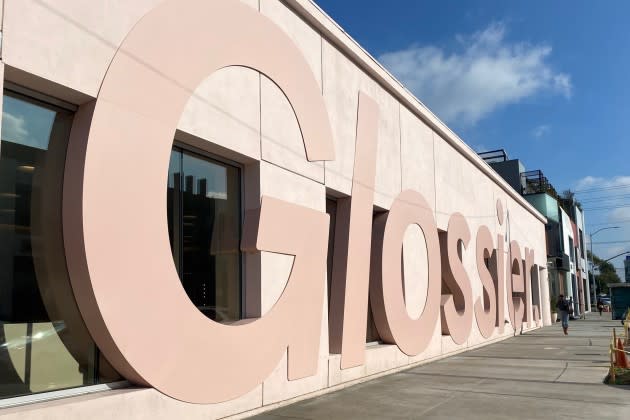What to Watch: Los Angeles Sees Retail Rents Nearing Pre-COVID-19 Levels as Stores Return to Popular Streets

A leisurely walk up and down Rodeo Drive in Beverly Hills will tell you one thing. There’s not a lot of retail space up for grabs.
New stores have been moving in, with luxury brands carving out bigger chunks of space instead of opting for tinier locations.
More from WWD
That was evident when Louis Vuitton recently opened its first California store dedicated exclusively to its men’s collection. Previously, menswear had been housed at the three-story Vuitton store two blocks away, but now it has its own two-story location with a 17-foot ceiling.
Loewe was another example of a retailer taking up lots of space. Just one block away from Vuitton, the Spanish luxury brand in November unveiled its first Los Angeles-area store in a 3,700-square-foot space. Loewe’s chief executive officer, Pascale Lepoivre, said that from the company’s website she knew that California and Los Angeles were among the label’s top four or five markets in the world.
Many other high-end brands are looking for space. “The competition is really high on Rodeo Drive,” said Jay Luchs, vice chairman at Newmark Knight Frank, a real estate firm.
That means Rodeo Drive’s retail vacancy rate is tight, at just under 5 percent, said Philip Klaparda, a partner with Dembo Realty, whose offices are in Beverly Hills.
He estimates that current retail rents on Rodeo Drive are at $750 to $800 a square foot a year compared to $900 a square foot before the COVID-19 pandemic put a damper on business in early 2020.
Rodeo Drive is considered the area’s top shopping street when it comes to luxury brands, but there are many other coveted thoroughfares on the west side of Los Angeles. “Luxury has done so well in the last few years that they are expanding. They are now taking up much larger spaces on the [high-end] shopping streets,” Luchs said.
One of those streets is Melrose Avenue and its neighboring Melrose Place, which takes up three blocks.
Melrose Avenue has three different retail personalities as one travels east from the Pacific Design Center, filled with interior design showrooms and design offices. The area closest to the Pacific Design Center, noted for its big blue glass structure called the Blue Whale, has the tonier stores and higher rents.
That stretch, which includes Melrose Place, is home to The RealReal, Rag & Bone, Vince and Lululemon, which have been there for a while. A little more than a year ago, the beauty brand Glossier made a splash by opening a 10,000-square-foot flagship whose exterior is painted in light pink and larger-than-life letters spelling out the company’s name. This was Glossier’s second store in its return to retail after shuttering all its locations in March 2020 due to the pandemic.
In 2023, Margiela will be opening an outpost on Melrose Place and a new Gucci store, which signed a lease for the old Marc Jacobs unit at 8400 Melrose Avenue, is expected to open in the summer.
Vacancies along this section of Melrose Avenue are less than 5 percent. Rents are averaging about $240 a square foot a year, which is in line with early 2020.
A less pricey section of Melrose Avenue is between La Cienega Boulevard and Fairfax Avenue. Los Angeles-based womenswear label Anine Bing recently opened a 2,400-square-foot flagship in this area at 8211 Melrose Avenue. Not far away, activewear brand Bandier opened its first California store in 2019. It is located across the street from the established Ron Herman store, which used to be a Fred Segal before the brand was sold, and the store was relocated to Sunset Boulevard.
Vacancies along this stretch run around 10 percent here and rents range from $70 to $80 a square foot a year, on par with pre-2020.
The hipper section of Melrose Avenue between Fairfax Avenue and La Brea Boulevard has been attracting a lot of athletic shoe and streetwear brands, including Shoe Palace, Foot Locker and CoolKicks.
Rents of around $50 to $60 a square foot are on par with pre-2020 rents, and vacancy rates are slightly below 10 percent, slightly better than before the pandemic. “It was struggling before the pandemic, but things have gotten better. That area has picked up and is strong,” Klaparda said.
Other renowned shopping streets in Los Angeles, which include Abbot Kinney and Robertson boulevards, are holding their own with vacancies just under 10 percent.
Abbot Kinney rents are around $180 a square foot a year, down from $200 a square foot seen before the pandemic. Rents on Robertson Boulevard, which has attracted more home décor and home furnishing establishments, are around $70 to $80 a square foot, close to early 2020 prices.
Andrew Turf, senior vice president at CBRE Group Inc. in Los Angeles, who specializes in urban and high-street leasing, sees many retail avenues on fire as brands are discovering a hip Los Angeles consumer willing to spend money. “Venice has done amazing. Malibu has come roaring back,” he said. “Vacancies have been drastically reduced, and the right brands have come in.”
The exception to this is downtown Los Angeles, which is still suffering from fewer office employees returning to work and more business going to the hipper Arts District a few miles away.
While retail has been a nonstop game of filling up vacant storefronts, the future might be a little more subdued.
Some real estate agents are hoping that the international brands that have been sitting on the sidelines finally make up their minds to open retail outposts in Los Angeles.
But there should be some cooling. “I think there is going to be a slowdown for sure,” Turf said. “There has been such an appetite for space over the last two years, it is inevitable.”

